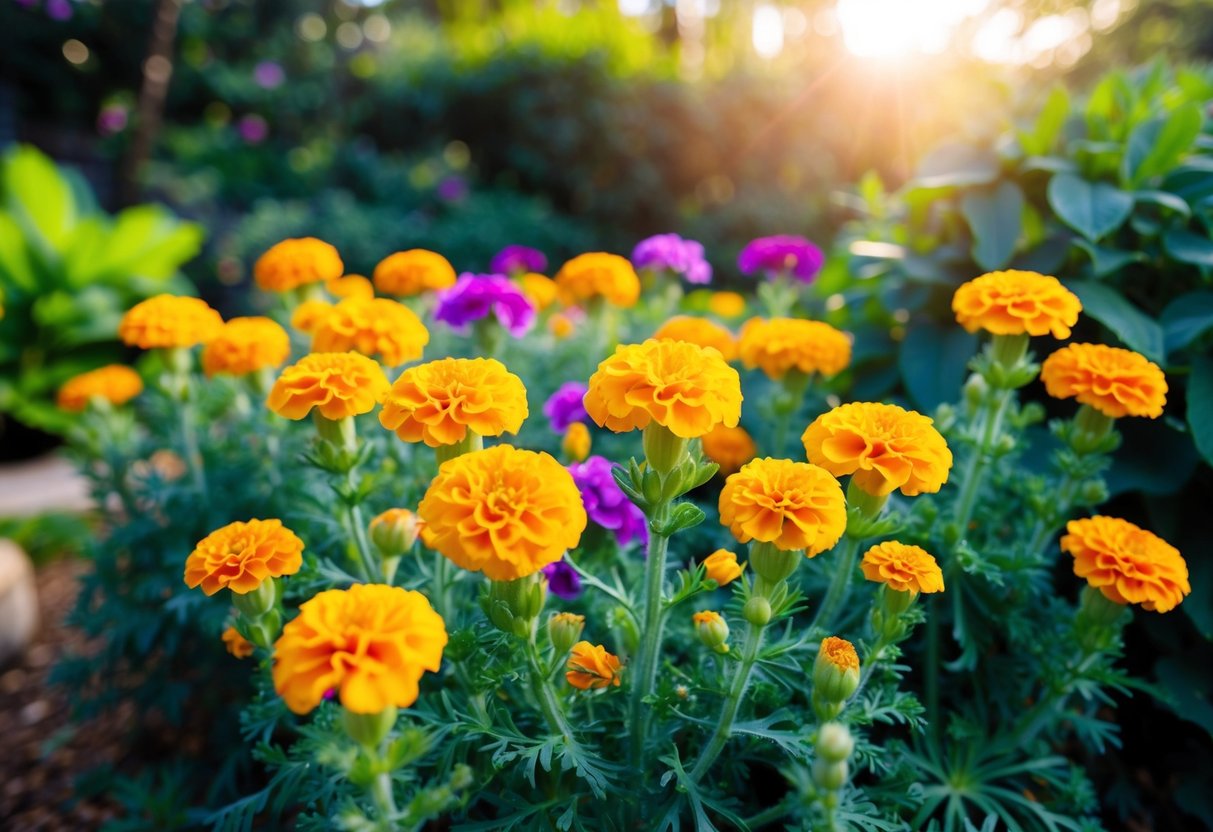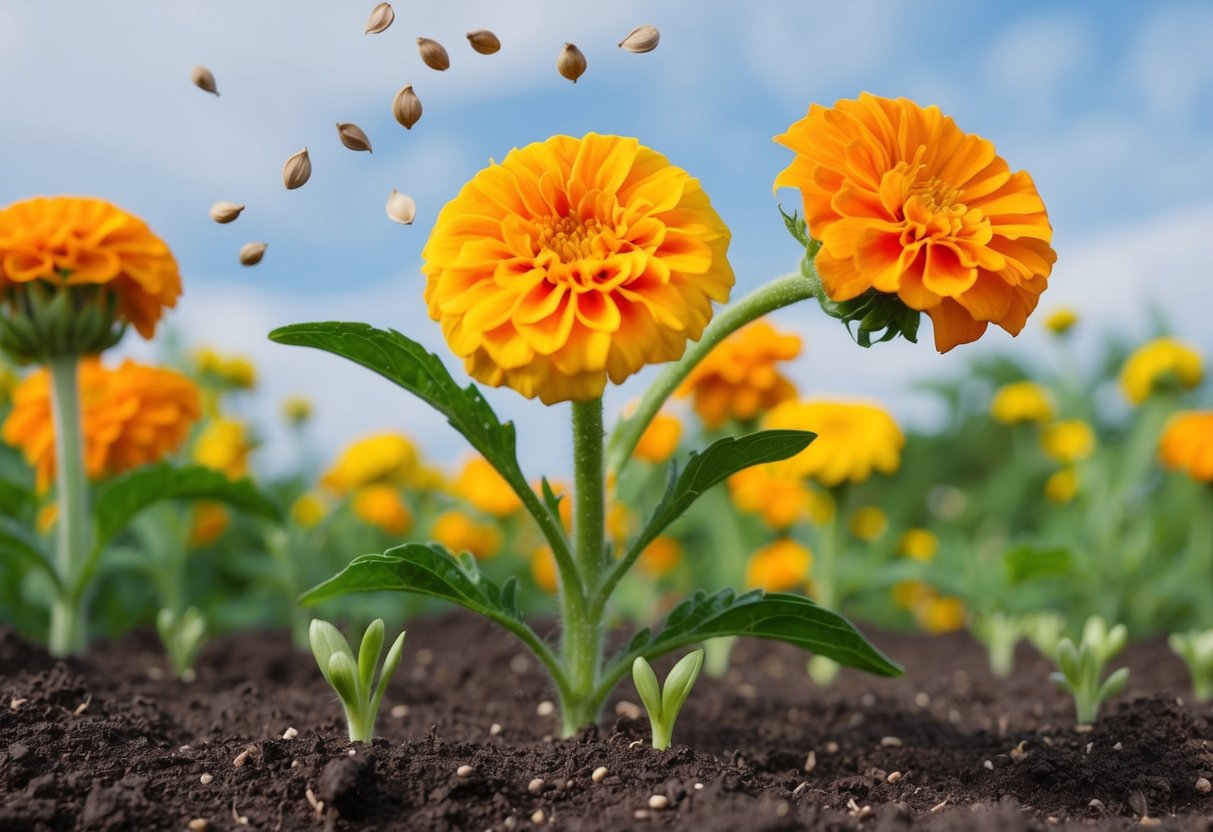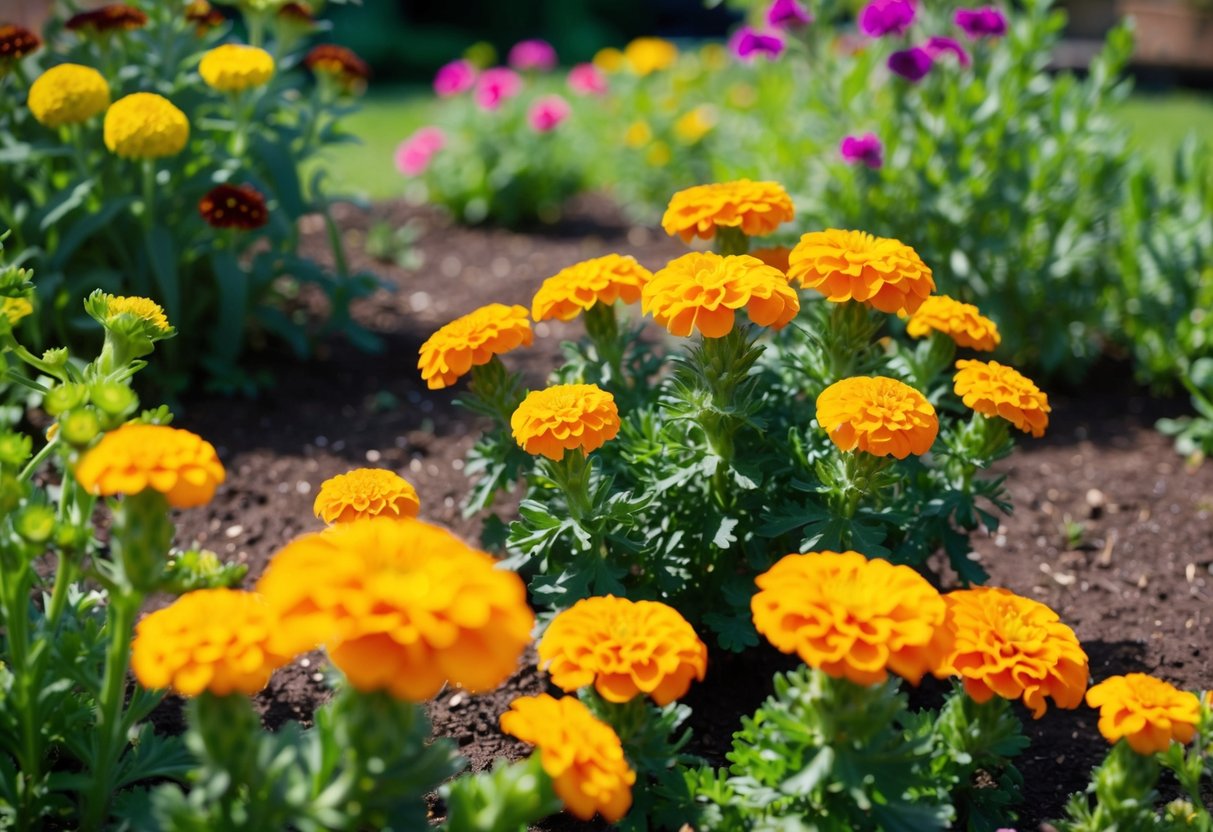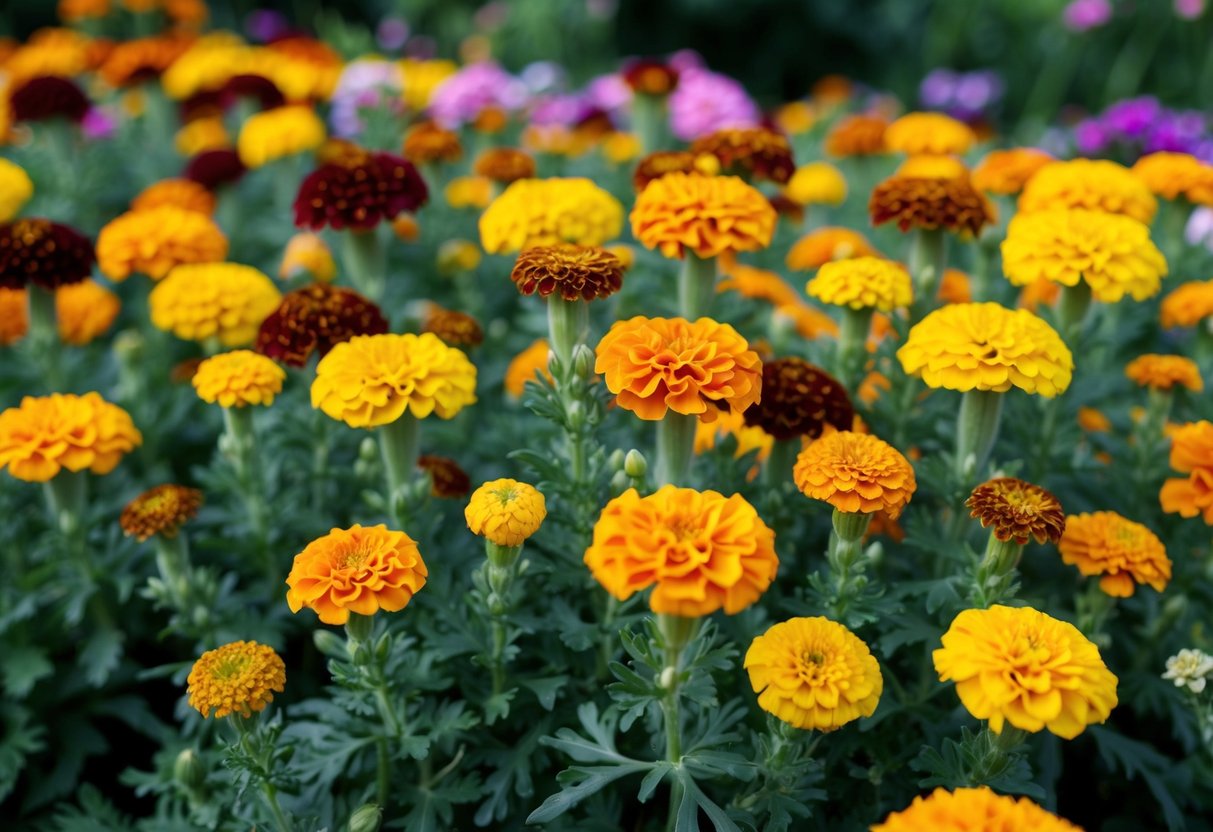Do Marigolds Come Back Every Year? Understanding Their Growth Cycle
Curious if your marigolds will brighten your garden year after year? Most marigolds are annuals, meaning they complete their life cycle in one growing season. This includes popular types like the French marigold and African marigold. They bring vibrant colors but need replanting each year.

However, some marigold varieties, like the Mexican marigold, are perennials. These can come back each year, surviving through different seasons. The mountain marigold also returns with its lively blooms.
You might be surprised to learn about another option. Signet marigolds and calendula often self-sow, dropping seeds that can sprout in the spring. This gives you new growth with less effort, offering a mix of planning and nature’s help in your garden.
Understanding the Life Cycle of Marigolds

Marigolds can be either annuals or perennials, and they might surprise you by self-seeding. This influences how they grow and come back each year.
Annual vs. Perennial Marigolds
Annual plants like French and African marigolds complete their life cycle in one season. They sprout, grow, flower, and die all in the same year. If you plant these, you should expect to replant them yearly. Many gardeners enjoy their vibrant colors during the summer, but when cold weather comes, these marigolds die off.
In contrast, perennial marigolds, such as Mexican and signet marigolds, can return each year if the conditions are right. They can survive through various seasons when cared for in a warmer climate. This means that with good care and proper conditions, your marigolds have the potential to keep blooming year after year.
Self-Seeding Capabilities
Marigolds possess an ability to self-seed. When flowers fade, they drop seeds into the soil. These seeds can germinate in the following spring. The seeds sprout into new plants if the conditions align, often without requiring additional planting.
If you leave the seeds undisturbed after the flowering season, chances are they might germinate on their own. This process lets you enjoy the bright marigold flowers even without planting anew each year. Just ensure soil conditions allow for germination and avoid cleaning up spent flowers too thoroughly, letting nature do its work.
Optimal Growing Conditions for Marigolds

To ensure your marigolds thrive, you need to understand their key requirements. These vibrant flowers need specific soil, sunlight, and watering conditions to flourish.
Soil Requirements
Marigolds prefer well-drained soil to prevent root rot. Sandy or loamy soils work best as they allow water to drain easily. You should aim for a soil pH between 6.0 and 7.0. If your soil is heavy or clay-like, consider adding organic compost to improve drainage and nutrient availability. This not only enhances growth but also boosts the soil’s structure. For best results, consider testing your soil before planting to ensure it suits marigold needs.
Sunlight and Temperature
These flowers thrive in full sun, which means placing them in areas where they receive direct sunlight for at least six hours a day. Marigolds are well-suited to hot climates and can handle high temperatures. However, if you live in an extremely hot area, offering some afternoon shade might be beneficial. This helps in preventing heat stress and ensures consistent blooming. They are also fairly drought-tolerant, making them an excellent choice for sunny spots.
Watering and Fertilization
Consistent watering is crucial, but marigolds do not like to stay too wet. You should water them deeply once or twice a week, allowing the soil to dry out between waterings. Avoid overhead watering, as wet foliage can lead to diseases. Fertilization can boost growth, especially during the blooming season. Using a balanced, slow-release fertilizer or mixing in organic compost can provide essential nutrients. However, be cautious—over-fertilization can cause lush foliage at the expense of flowers.
Caring for Marigolds Throughout the Seasons

Marigolds are vibrant and relatively easy to care for, but they require some attention to ensure they thrive throughout the growing season. Key care activities include deadheading to prolong blooms and keeping an eye on pests and diseases that can affect their growth.
Deadheading for Longer Blooms
Deadheading is an important practice for keeping marigolds blooming for a longer time. It involves removing faded or dead flowers from the plant. This process encourages the marigold to produce more flowers instead of using energy to create seeds.
To deadhead, pinch the wilted flower below its base. Regularly check your marigolds throughout the blooming season to ensure old blooms are removed promptly. This also helps to keep the plant looking neat and vibrant. Deadheading is especially important for annual marigolds, like the French and African types, which bloom until the first frost. By maintaining good deadheading habits, you’ll enjoy a more prolonged display of colorful flowers in your garden.
Managing Pests and Diseases
Marigolds are generally hardy but can still fall prey to common pests and diseases. Aphids, spider mites, and nematodes are frequent troubles for marigold growers. Keep your plants healthy by inspecting them regularly for signs of pests and addressing issues quickly.
To control aphids and spider mites, use a gentle spray of water to dislodge them or consider insecticidal soap as a natural treatment. It’s also essential to prevent nematode infestations, which affect the roots. You can do this by planting marigolds alongside nematode-repelling companions like garlic or onions.
Additionally, ensure good air circulation around your plants to prevent fungal diseases. Simple maintenance like weeding and proper watering can keep marigolds strong and resilient against common garden hassles.
Benefits of Growing Marigolds in Your Garden

Growing marigolds offers two main benefits: they work well in companion planting, and they attract beneficial insects to your garden. These qualities make them a favorite among gardeners looking to improve their vegetable garden’s health and yield.
Companion Planting Advantages
Marigolds are excellent companion plants for vegetables like tomatoes and beans. When you plant them alongside these vegetables, they can help repel harmful pests such as nematodes. This means healthier plants without using chemical pesticides.
In addition, marigolds can grow well with herbs, enhancing both your flowers and herbs. They create a natural barrier, providing a safeguard for plants like basil and oregano. Their presence results in a more thriving and resilient garden.
Attracting Beneficial Insects
Marigolds are known to attract pollinators such as bees and butterflies. Their bright flowers serve as a beacon, drawing these helpful insects to your garden. This attraction boosts pollination, enhancing the growth and productivity of your plants.
Besides pollinators, marigolds invite beneficial insects like ladybugs and lacewings. These insects devour common pests such as aphids, keeping your garden’s ecosystem in balance. Planting marigolds can lead to a healthier and more vibrant garden.
Varieties of Marigolds and Their Unique Characteristics

Marigolds are a diverse group of flowers that bring vibrant color to any garden. They vary in size, color, and growth habits. This section highlights the uniqueness of various types of marigolds.
Color Variations and Bloom Time
Marigolds come in an array of colors, including yellows, oranges, reds, and even bicolors. French marigolds are known for their rich reds, oranges, and yellows. Their blooms are smaller but abundant, creating a bold splash of color.
African marigolds feature large pom-pom blooms in yellow and orange. They make a striking display with their tall stems. Signet marigolds, on the other hand, have small, delicate flowers perfect for edging.
Bloom times can differ. French and signet marigolds bloom from spring to fall, thriving in warm weather. African marigolds are slightly more limited, flourishing mainly in summer. Understanding these bloom times helps you plan your garden’s color palette better.
Popular Marigold Types for Gardens
You have many choices when it comes to marigold types for your garden. French marigolds (Tagetes patula) are compact and bushy. They’re perfect for small spaces or as borders.
African marigolds (Tagetes erecta), with their tall stems, add height to flower beds and are great as cut flowers.
For something unique, try pot marigolds (Calendula officinalis). They’re not true marigolds but share vibrant colors. Their petals are even edible!
Hybrid marigolds can provide a mix of characteristics from different species. These hybrids often combine the best color and size features, allowing flexibility in garden design. Keep your garden lively by choosing a mix of these types.







